Share this
February 23, 2016
Hiring the best talent is only one component in the development of a productive workforce. New talent needs to be given the proper level of support through your company’s onboarding program to have the greatest chance of success. This program is an investment in your company’s people that has a degree of risk closely related to how well it is formed. Simply stated, the more you invest, the better the chances are that new talent will prosper and your company will enjoy several huge benefits:
- Increased retention rates
- Higher performance levels
- Greater engagement and commitment
- Lessened time to contribution
- Lowered employee stress
The features of a successful onboarding program can change with the position type and company environment, among other variables. With that in mind, here are several elements to consider adding to your program at each stage:
Pre-Hire
Onboarding actually begins during the recruitment process. This is a unique opportunity to create realistic expectations and orientate candidates by offering information on the company’s history, values, processes and culture. Both will translate into greater retention rates and higher performance.
Aside from more conventional methods such as a verbal explanation during an interview or a pamphlet, there are Realistic Job Previews(RJBs) which can be very effective. It must be noted as well that while some research shows RJBs increase the rate of retention, they also decrease the rate of job offer acceptance. This, in truth, is likely a good thing that will save your company from a wasted investment.
Before the First Day
Send a welcome packet that includes necessary paperwork, company information, handbook, guides or even a personalized note. This is a continuation of the orientation process and a way to develop a positive company image in their mind. Candidates will also appreciate the ability to lower stress levels for the first day by knocking out light work early on.
First Week
On one side, its hard not to want new talent to jump headfirst into projects and many are eager to get started. However, on the other, this only compounds an already highly stressful stage, which limits productivity. The result could be laying the groundwork for future dissatisfaction.
Therefore, while considering the individual, strike a balance between overwhelming new hires and making them feel as if they are only contributing the bare minimum. Both extremes need to be avoided during the onboarding process.
The Following Months
A good onboarding program last months, not days. During this time, setup regular informal meetings with the new hire and you or other key individuals. This could be coffee, luncheon or other types of low stress environments that tend to allow for more open communication. These meetings are an excellent way to track progress, build strong working relationships, foster confidence and further clarify job responsibilities.


